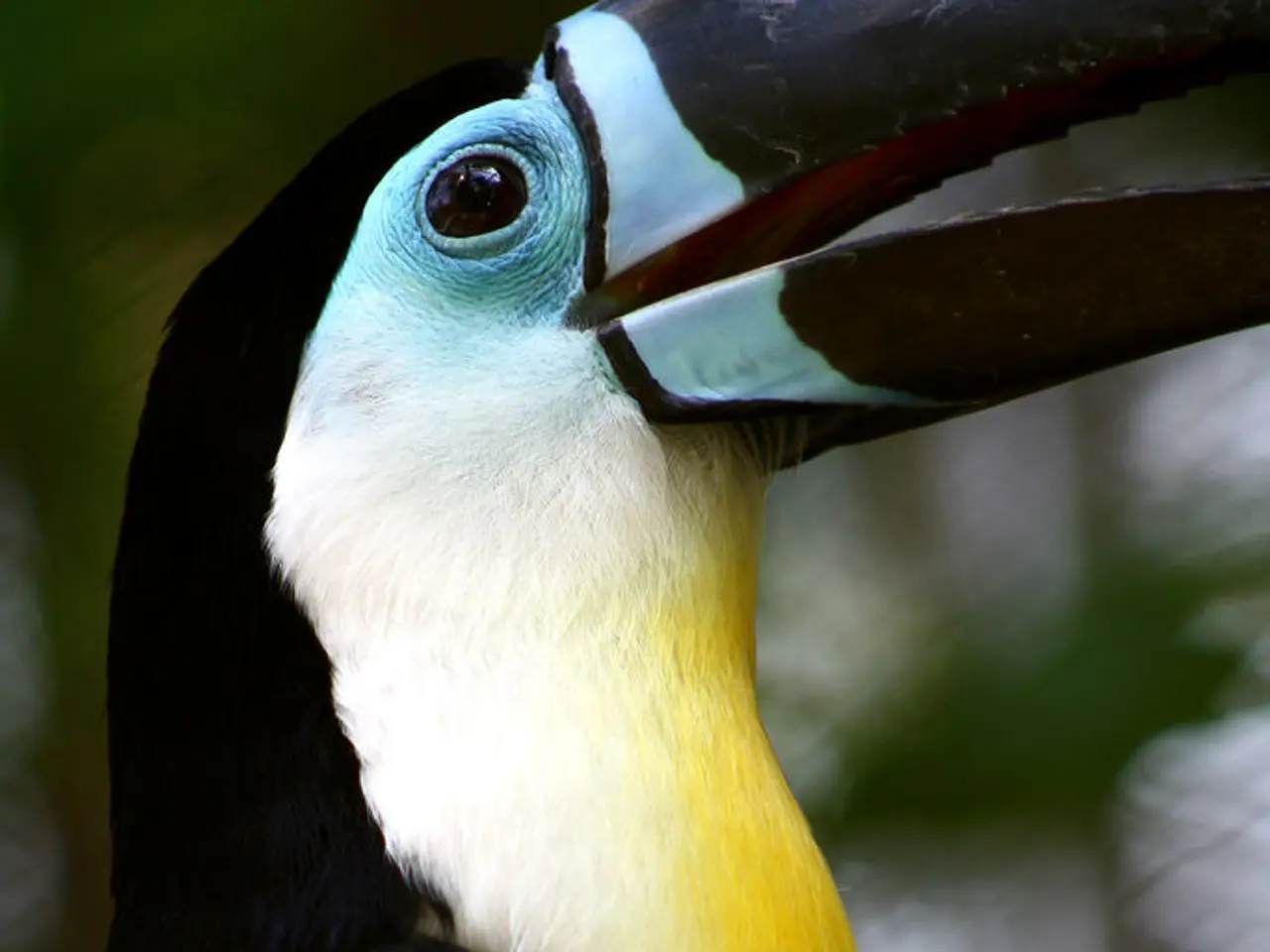Exploring the Allure and Enigma of Dark Creatures in Nature: Symbolism, Survival Strategies, and Variety in Wildlife Species
Black Animals: Nature's Stealthy Survivors
In the realm of nature, black animals hold a captivating allure, playing significant roles in folklore, science, and art. From the elusive black mamba to the enigmatic black panther, these creatures have adapted to their environments in ways that ensure their survival and perpetuate their mystique.
The black mamba, one of the world's most venomous snakes, is typically gray or olive in colour, but its mouth interior is a striking jet-black. This creature is not only feared for its venom but also for its speed, making it a formidable predator in the African savannah.
The American black bear, found throughout North America, is not always black, but true black variants are common in the eastern U.S. and Canada. These bears are well-adapted to their environments, with adaptations such as hibernation and an omnivorous diet that make them resilient to environmental variations.
The black widow spider, with its shiny black body, is feared for its venomous bite. Its dark hue serves as a warning to predators, signaling its potent defence mechanism.
The Ayam Cemani chicken, an Indonesian breed, is entirely black due to a genetic condition called fibromelanosis. This rare bird is prized for its association with rituals and mysticism.
The black panther, a melanistic variant of the leopard or jaguar, is known for its dark coat that helps it blend into dense forests, making it a formidable nocturnal hunter.
Black animals, such as ravens, black panthers, and black bears, have a significant role in folklore, science, and art. Their unique ecological roles and adaptations vary by species but generally include camouflage and predator avoidance, thermoregulation, UV protection, ecological niches, and adaptive behaviors.
Melanism, the increase in the development of the dark pigment melanin in the skin, fur, feathers, or scales, is the primary cause of black coloration in animals. This genetic phenomenon plays an important role in evolution and adaptation, enabling animals to thrive in diverse environments.
The common raven, a jet-black bird native to the Northern Hemisphere, is known for its intelligence and symbolic significance in mythology and literature. Black swans, native to Australia, defy the common European belief that all swans are white, and they now serve as a metaphor for rare and unpredictable events.
Black squirrels, a melanistic form of the common Eastern gray squirrel, are found in colder climates and urban settings. Their dark coloration may help them absorb more sunlight in colder climates and evade predators more effectively in urban settings.
These adaptations illustrate a combination of evolutionary traits selected to optimize survival and reproductive success in various ecological contexts. Thus, black animals contribute to ecosystem diversity and function by occupying specific niches shaped by their pigmentation and associated traits.
In conclusion, black animals are more than just captivating creatures; they are evolutionary masterpieces, each adapted to its unique environment in ways that ensure its survival and perpetuate its mystique. Their roles in ecosystems are diverse and crucial, from shaping vegetation dynamics to contributing to nutrient cycles and habitat modification. Understanding these adaptations not only deepens our appreciation for these creatures but also provides valuable insights into the intricate web of life on our planet.
- In the realms of health-and-wellness and lifestyle, black birds like the common raven and the black swan have symbolic significance for intelligence, while in the world of science and education-and-self-development, their roles in shaping vegetation dynamics and contributing to nutrient cycles are the subject of study.
- For readers interested in fashion-and-beauty, the Ayam Cemani chicken's rare black feathers and associations with rituals and mysticism make it an intriguing subject.
- In the field of fitness-and-exercise, the black squirrel's dark coloration is believed to aid thermoregulation in colder climates and improve camouflage in urban settings.
- For bookworms and enthusiasts of history and art, the black mamba, black panther, and black bear have captivated artists, writers, and scientists with their unique ecological roles and adaptations for centuries.




